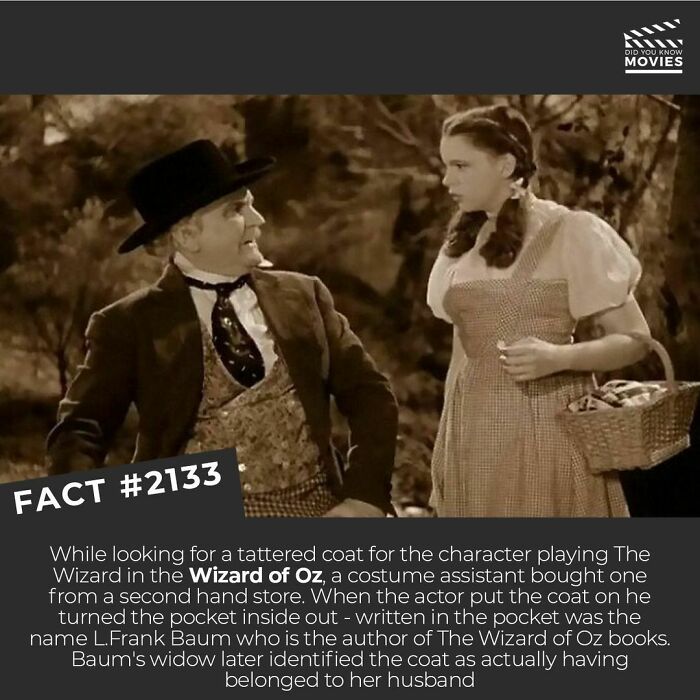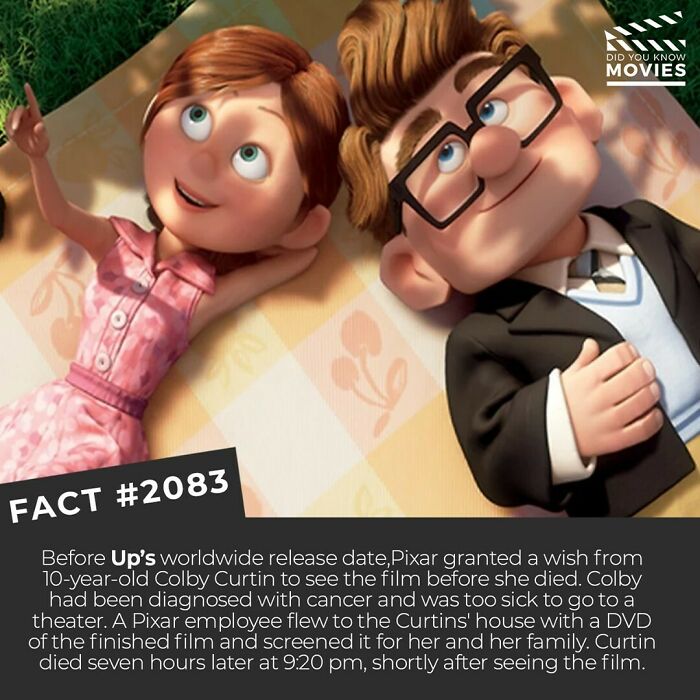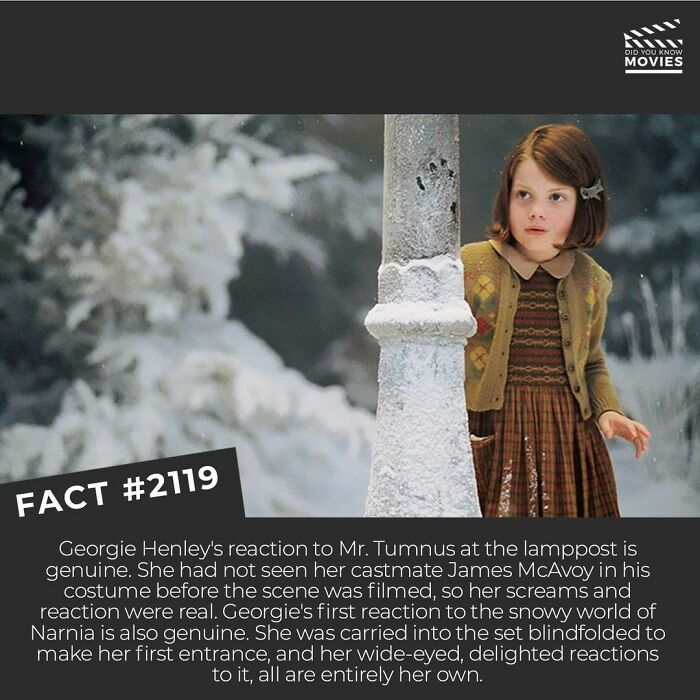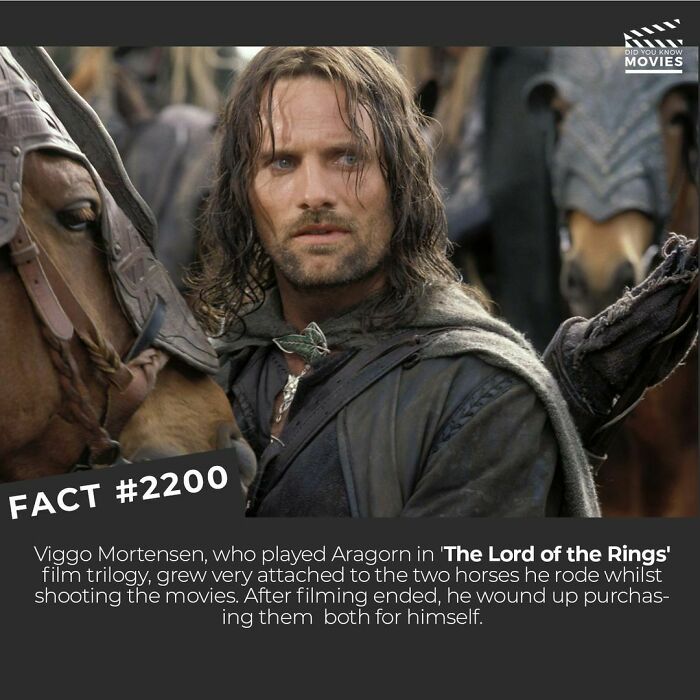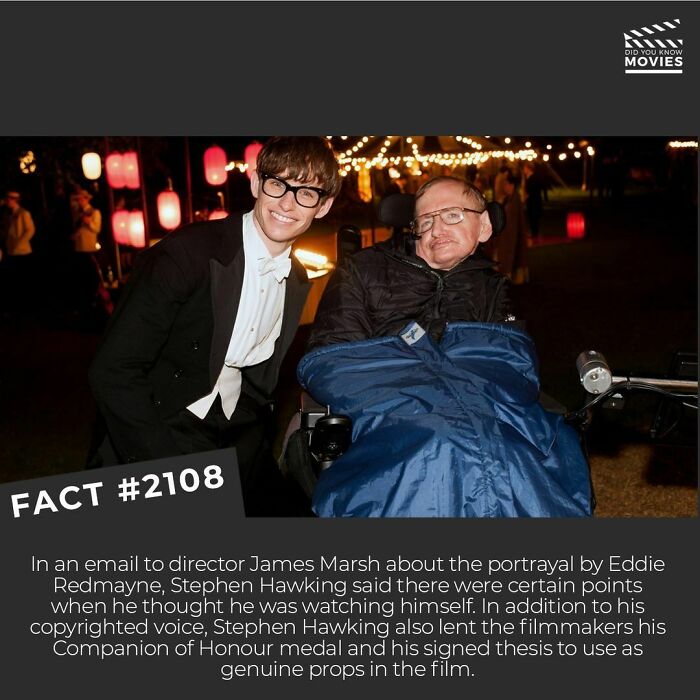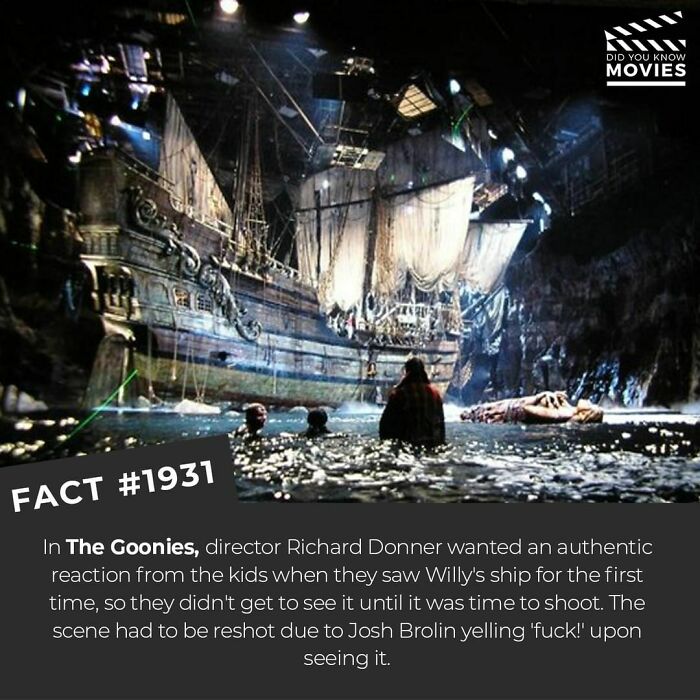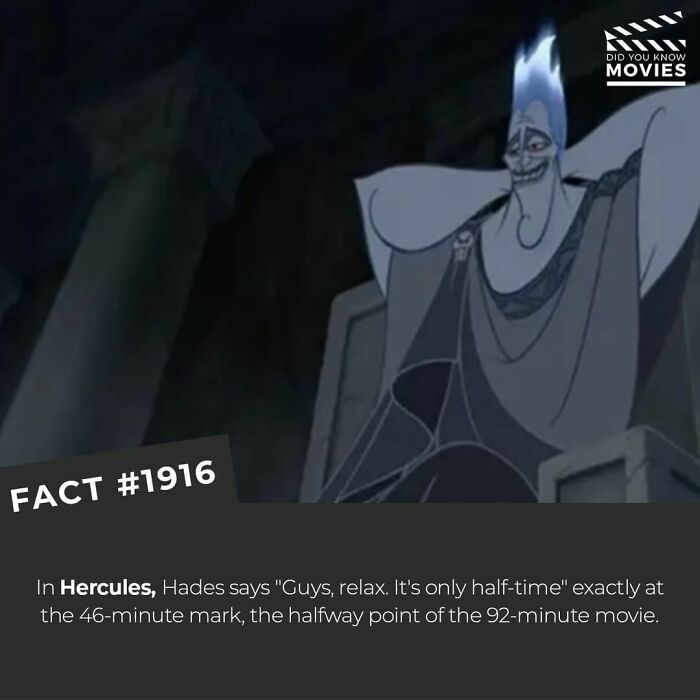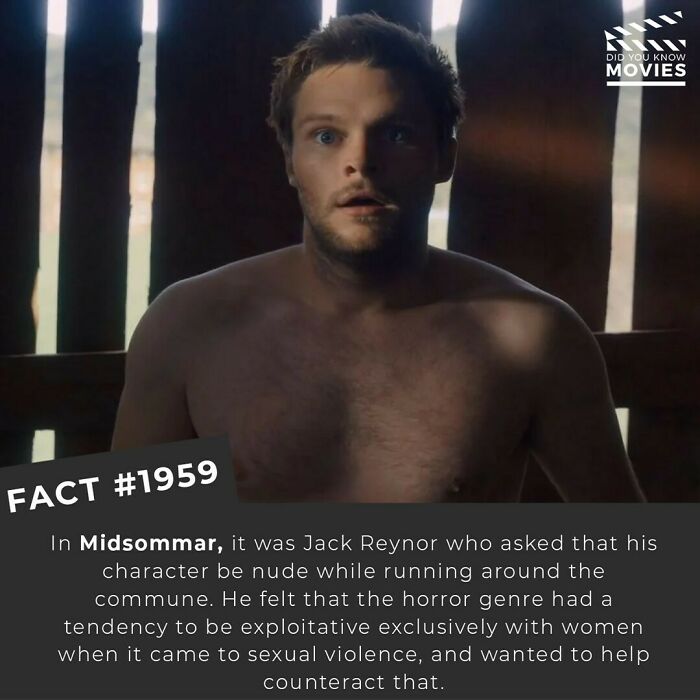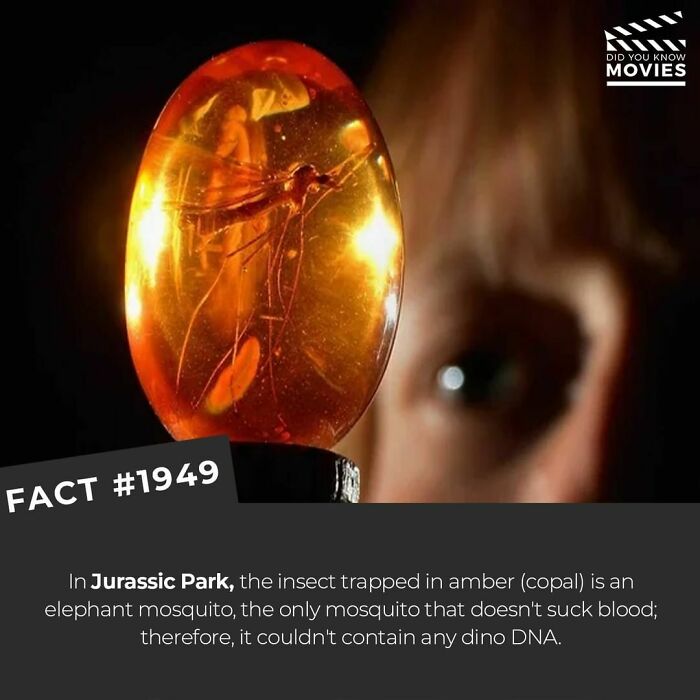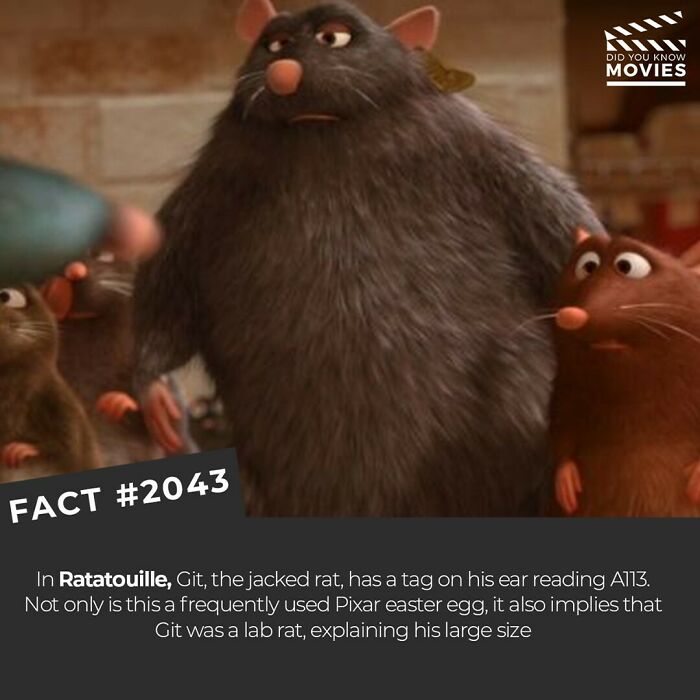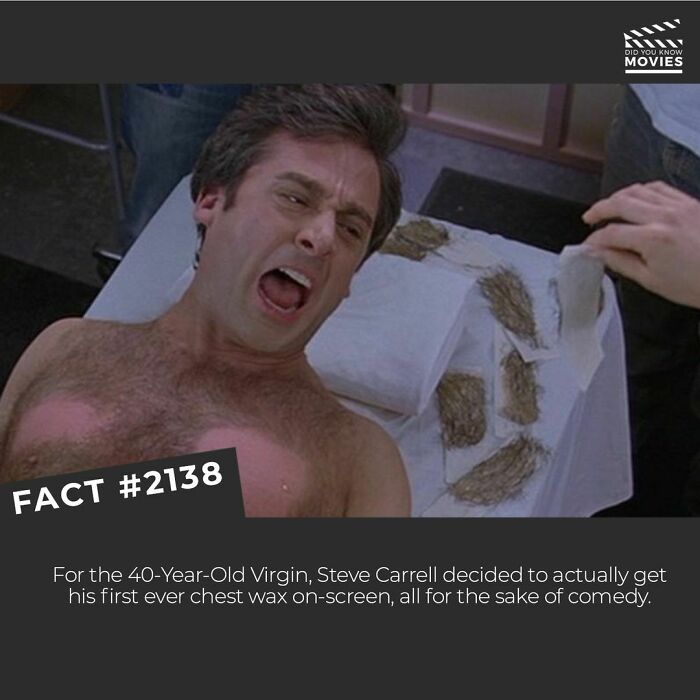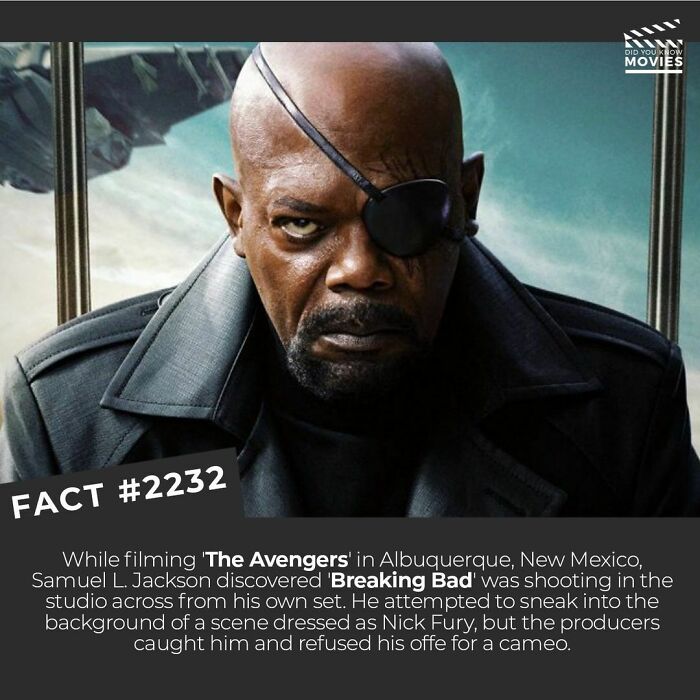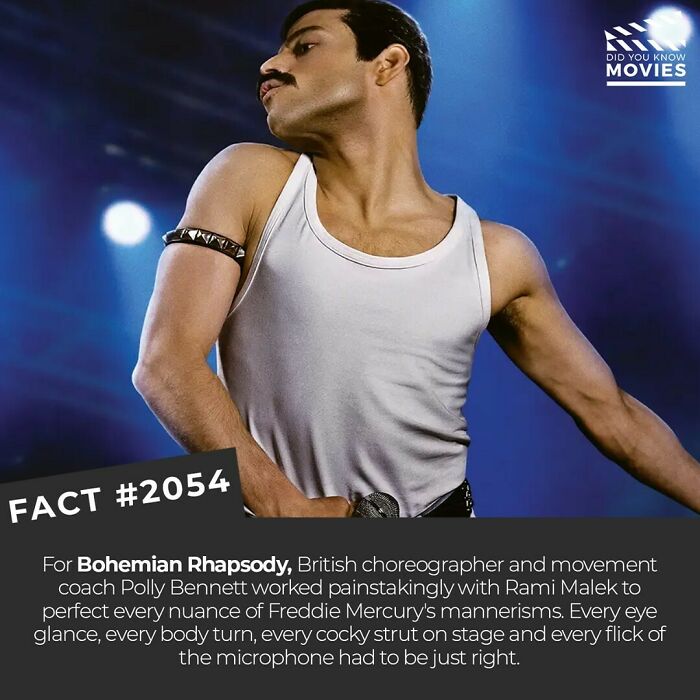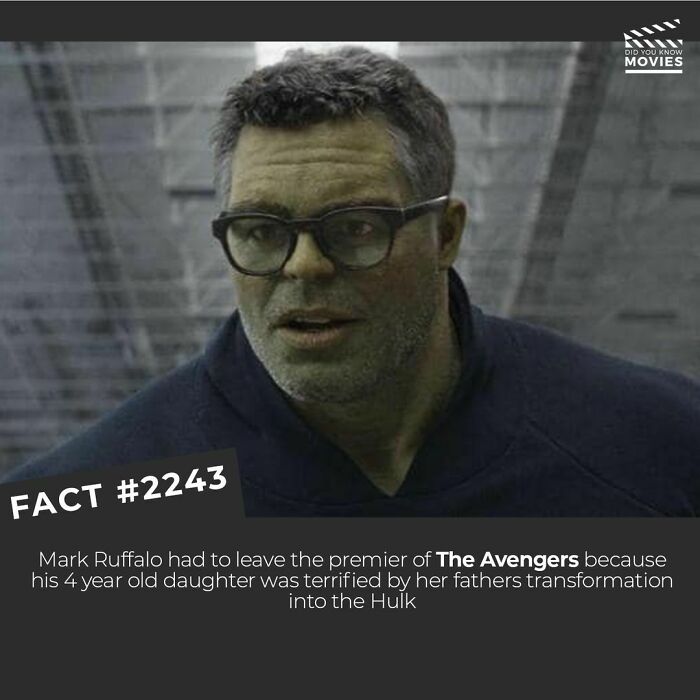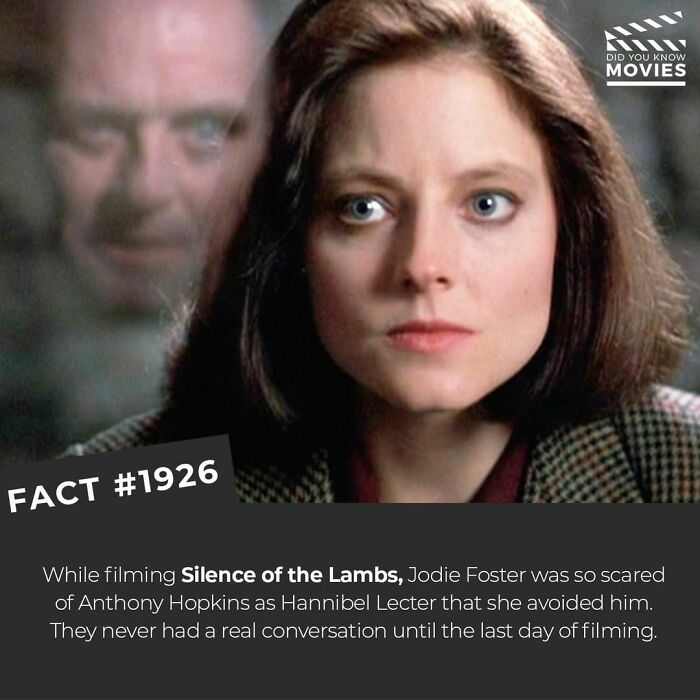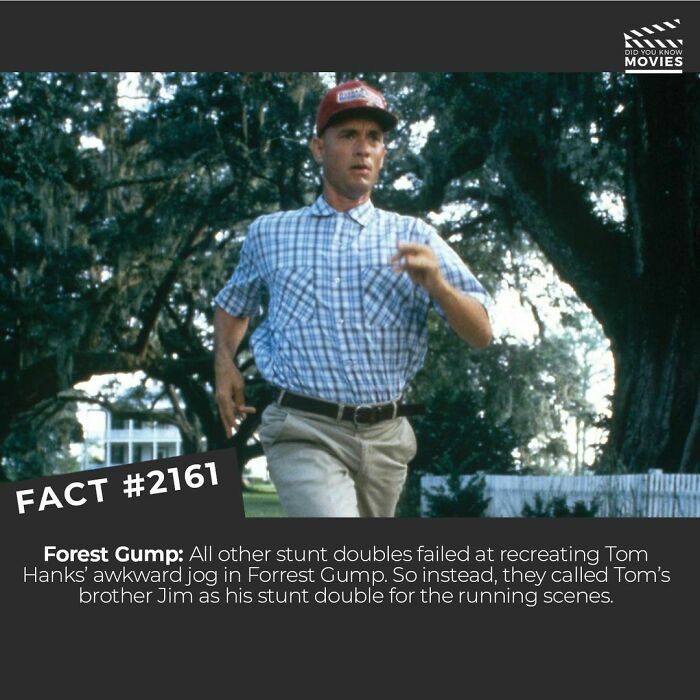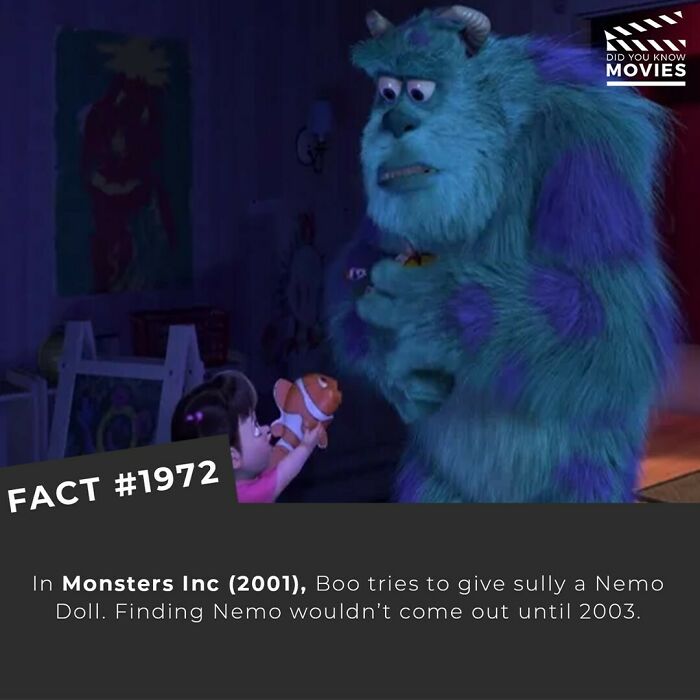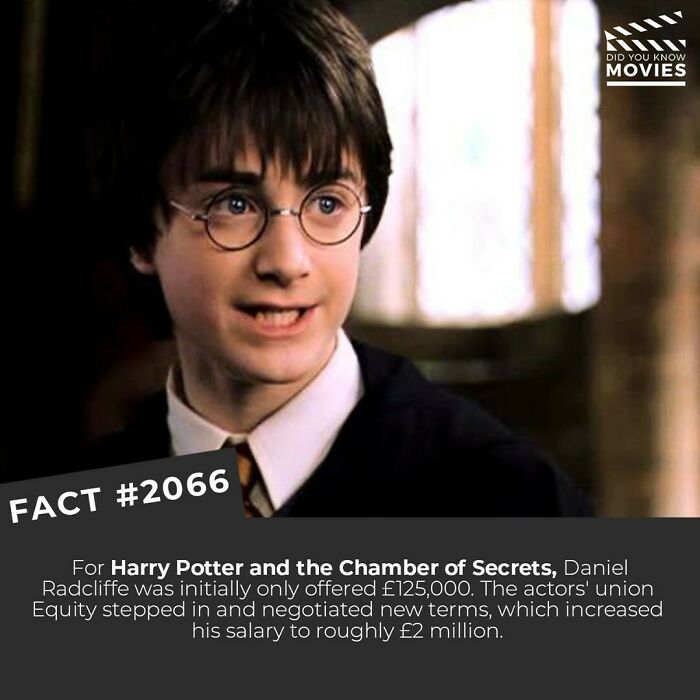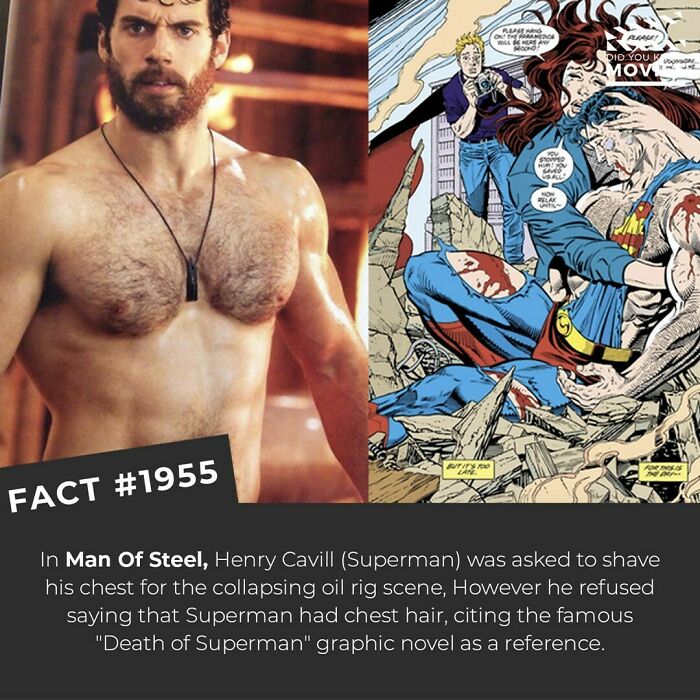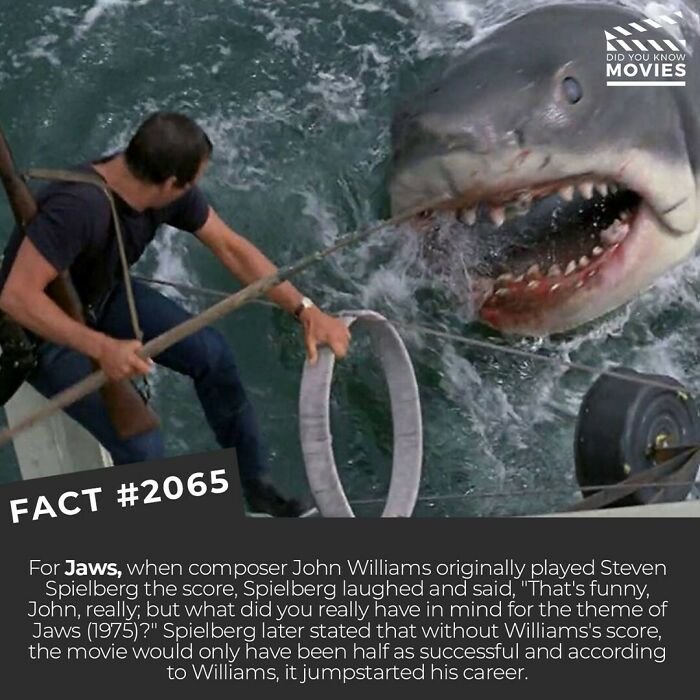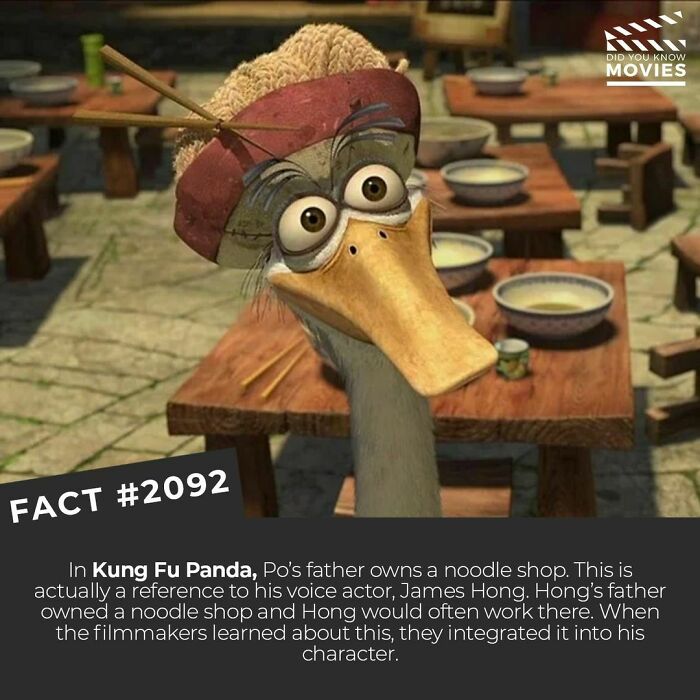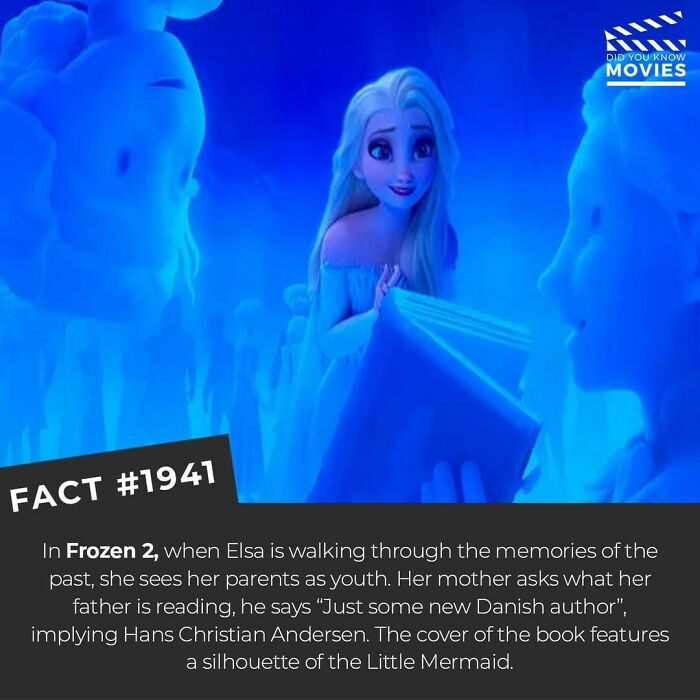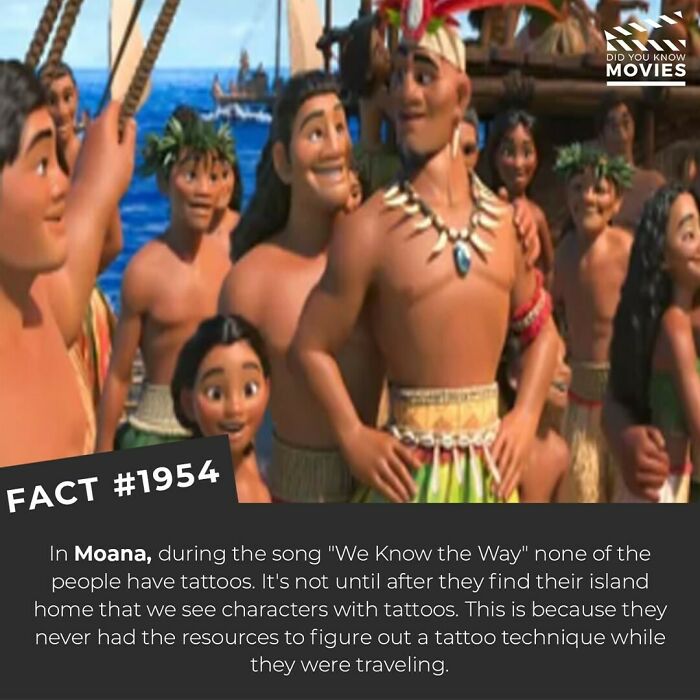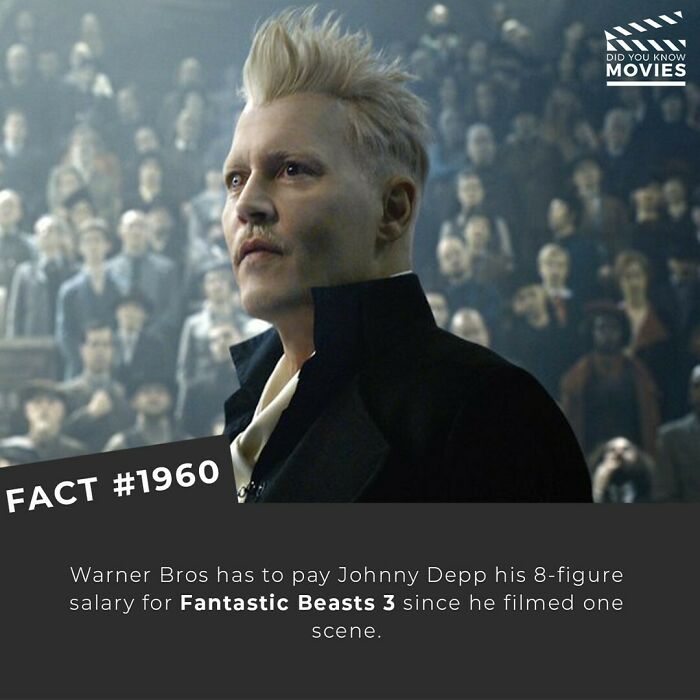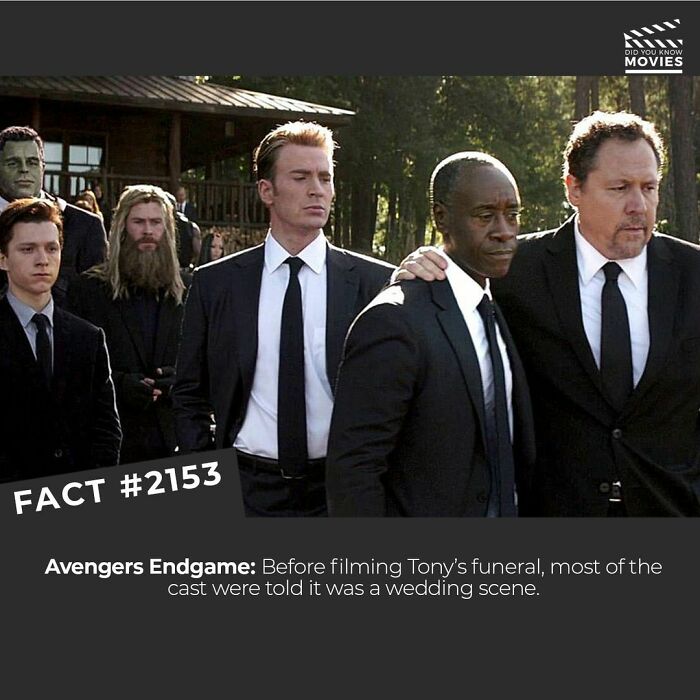The line “stranger than fiction” can really apply to cinema and filmmaking. Actors, directors and the nitty-gritty of actually shooting a movie has enough drama, crazy tales, and lore that it’s no wonder Hollywood itself is often a setting for films and television. In the pre-internet era, all these tales would be unavailable to industry outsiders.
The “Did You Know Movies” Instagram account shares trivia and fun facts about cinema and filmmaking that you probably never knew. So scroll down, upvote your favorites, and stay until the credits to comment any bits of trivia you happen to know yourself.
More info: Instagram
#1
Image credits: didyouknowmovies
#2
Image credits: didyouknowmovies
#3
Image credits: didyouknowmovies
Some bits of film trivia have become so deeply ingrained in popular culture that they start to generate their own memes. Who hasn’t watched through “The Two Towers” without hearing someone say “Did you know that Viggo Mortensen actually broke his toe when he kicked the helmet?” Incidentally, this isn’t the only case of on-set injury, for example, nor the only injury sustained by Viggo, aka Aragorn (he almost drowned during the same film and also broke a tooth.)
In the first Lord of the Rings film (The Fellowship of the Ring, if you somehow aren’t familiar,) actor Sean Astin, who played fan-favorite Samwise Gamgee, stepped on a large shard of glass during the scene where he chases Frodo who is attempting to sail away. He had to be evacuated by helicopter after losing a substantial amount of blood. Orlando Bloom managed to break a rib when falling from a horse and to add insult to injury, it became an inside joke due to his constant complaining about it.
#4
Image credits: didyouknowmovies
#5
Image credits: didyouknowmovies
#6
Image credits: didyouknowmovies
Like these stories from the filming of the Lord of the Rings, many of the fun facts in this article are the result of real stunts or practical effects. This is not to say that CGI doesn’t have a place in creating great scenes. The Lord of the Rings and, more visibly, the Matrix both used a combination of the two to achieve the scenes and visuals they wanted. The Matrix in particular was revolutionary in its use of post-production CGI, often to remove the wires the actors were attached to while flying through the air.
#7
Image credits: didyouknowmovies
#8
Image credits: didyouknowmovies
#9
Image credits: didyouknowmovies
Many studios do like CGI, as it entails fewer costs, less principal photography (which means actually filming things, not taking pictures of the head of a school), and fewer risks. Actors are a lot less likely to get injured, like in the aforementioned stories, if all the “action” is generated by a computer. Filming costs are still quite high, for example, even a decade ago were up to 100 ‘000-250’ 000$ a day.
#10
Image credits: didyouknowmovies
#11
Image credits: didyouknowmovies
#12
Image credits: didyouknowmovies
When you factor in the length of time it takes to film, it’s easy to see how these costs pile up quickly. Feature-length films can shoot for around a hundred days, with some taking even longer. “Eyes Wide Shut” was filmed for over 400 days, as director Stanley Kubrick was a notorious perfectionist. Studios also have to manage the potential risk of needing reshoots.
#13
Image credits: didyouknowmovies
#14
Image credits: didyouknowmovies
#15
Image credits: didyouknowmovies
When the grueling job of filming is complete, it was (and still is) common to say that it’s a “wrap.” This slang goes back to the 1920s, and traditionally, the crew or at least the cast would enjoy a “wrap party” to celebrate the end of filming. Whether or not actual wraps are served is unknown. The actual etymology of “it’s a wrap” is unclear, as some sources point to it meaning “wind, reel, and print,” though these things were not actually done with pre-digital film. Instead of being printed and reeled, film would be “canned,” hence the term “it’s in the can.”
#16
Image credits: didyouknowmovies
#17
Image credits: didyouknowmovies
#18
Image credits: didyouknowmovies
Even after the editors have looked over the film, producers will still show what they have to a test audience before it goes to the public. At times, this can even lead to more reshoots. For example, Shaun of the Dead got roughly 15 seconds added to its final cut after test audiences disliked the ending for being too “abrupt.” Somehow, these fifteen additional seconds were enough to vastly increase the average score the film was given.
#19
Image credits: didyouknowmovies
#20
Image credits: didyouknowmovies
#21
Image credits: didyouknowmovies
Finally, at long last, the film goes to distribution, unless there is some outstanding issue and the production company kills it. For most of the films that we view, the first step is a cinema release. The number one movie-going nation is South Korea, where people viewed an average of 4.12 movies a year, compared to the number two spot for the US (3.88 a year.) Normally, there would be a theatrical “window,” where the film was only available in cinemas and people would have to wait a few weeks to see it at home. Nowadays, streaming services have changed the media landscape from top to bottom. If you want to learn more about interesting cinema facts, check out our other articles here and here.
#22
Image credits: didyouknowmovies
#23
Image credits: didyouknowmovies
#24
Image credits: didyouknowmovies
#25
Image credits: didyouknowmovies
#26
Image credits: didyouknowmovies
#27
Image credits: didyouknowmovies
#28
Image credits: didyouknowmovies
#29
Image credits: didyouknowmovies
#30
Image credits: didyouknowmovies
Go to Source
Author: Gabija Saveiskyte

